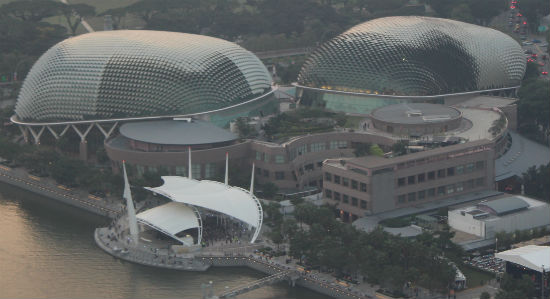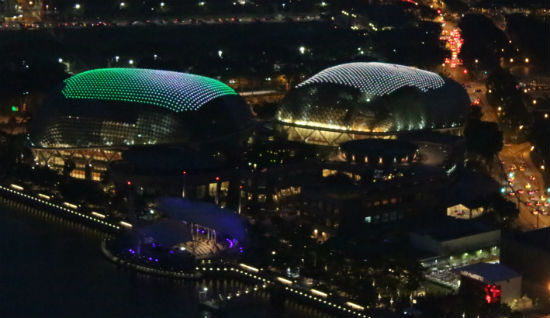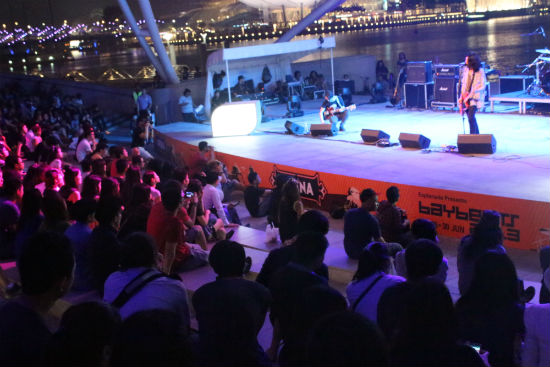싱가포르 복합문화공간, 에스플로네이드

This is the first part of the 3-part special series on various topics covered through the 2013 Summer Overseas Coverage of the CNU Press and Broadcasting Center from June 24th to July 2nd. This first article is about Singapore's performing arts venue, Esplanade in relation to the search for identity and role of the Asian Culture Complex. – Ed.
Gwangju citizens can participate in a variety of cultural arts events of the “Hub City of Asian Culture” project including 2013 Asia Culture Forum in the city this month. The forum which is being held on September 9th has the theme of “Culture, Technology, Creativity: Art & Culture Complex” partly to promote the project and identify areas of cooperation among foreign cultural institutions and the Asian Culture Complex (ACC) scheduled to be completed in 2014 and its operation will commence in 2015.
However, regarding its operation, there is a controversy about the incorporation of the ACC being pushed forward by the Ministry of Culture, Sports and Tourism. Civic groups have presented a statement that opposes the government’s policy on the ACC operation. In these situations we need to think about what is best for managing the ACC stably and developing Gwangju into a cultural hub in Asia through the analysis of the Esplanade, a center for arts and culture in Singapore. Esplanade is considered to be one of the most successful arts and performance centers in the world from the time it opened in 2002.
Esplanade is a performing arts center to spread a variety of arts and culture to Singapore citizens. It has about 3000 performances in a year and they are classified between two types: One is supervised by Esplanade itself and the other is supervised by outside renting their stadium. Jobina Tan, Deputy Director of Programming said that in a year, more than 80% of performances at the center are run by Esplanade itself and among 70% of them are for free. "We want to make a center that everyone, even those who cannot afford it, could enjoy and experience the arts and cultures," she added. She also said that the reason people love coming to Esplanade is that when the center plans the program for a year and tries to make the program as various as possible. A rock festival for the young, diverse cultural performances of China or Malaysia could be good examples. "We want people from different places to understand each other and be united as one through the arts and music," she said. As a result, people think of the Esplanade as a place to have fun and a place where they can come anytime they want.

This attractive place, however, was not welcomed when it was first planned. In 1970s, the Singapore government planned to build a world class arts and performance center, but many people at that times thought arts and culture are only for the rich who could afford nice clothes and expensive tickets, so the majority of citizens were not even interested in it. When it was finally completed taking about 10 years the social atmosphere was pessimistic. The biggest reason was the money spent on Esplanade. The government spent six hundred million Singapore dollars and it was an exorbitant price at that times. Most citizens were very angry that the government spent that much money rather than spending on public welfare such as hospitals and schools. Fortunately, with the efforts of the government and Esplanade itself, the past eleven years, from the time it was opened in 2002, the center has presented more than 22,000 shows, drawing an audience of 16.5 million patrons, according to Esplanade.
The unique structure of Esplanade is also well known as much as its interesting attractions. Esplanade has two large size stadiums, each can accommodate more than 800 people. It is also known as the Durian shaped building. Durian is a tropical fruit that has spikes on its surface. The durian-like structure is actually a very clever way to reduce its electronic use. At the early stage of building Esplanade, architects used wide glass to give people a welcoming feeling. The problem was that glass caused the greenhouse effect and electricity consumption would be inadequate to meet the demand. Therefore, what the architects did was they observed the sun rises and sets for one whole year and as a solution, they put a spiky structure on the roof to cover the building from the sun so it could minimize the use of electricity. What architects actually intended when they first designed the building was that they wanted to make the center look like a Chinese lamp floating on the bay.

Esplanade has many good things that Gwangju could learn from. It provides various programs for people, gives chances for artists to stand on a stage and most importantly, it became a place where people can have fun. Since Esplanade is one of the best arts and cultural centers, benchmarking it could help the ACC to make a better center. Of course, each center has slightly different purposes of establishment. The main purpose of Esplanade is providing culture and arts programs for people, while the ACC will have major facilities such as theaters, a research institute and a venue for supporting cultural exchanges among Asian nations. But, it could be very useful to learn the way Esplanade makes its programs for a year or secure human resources. Still, it should come first to have cultural and arts content. Sori Arts Center located in Jeonju nearby Gwangju had 607 performances and exhibits in 2012. Gwangju is bigger than Jeonju, but both centers located in Jeolla Province have the potential to operate similar content. It needs to think how they are going to secure differentiated programs for people. The number of events matters to them, but more importantly, the quality and variety of events should be considered as well. The ACC is now under construction. Before the complex’s completion, the people concerned with it need to see what they can learn from the Esplanade. Also, they have to reflect enough to be able to emphasize Gwangju's own identity to make the complex have a global competitiveness so it can attract not only locals but also the world.
By Kim Hae-in, Student Editor
김해인 기자
haein6772@googlemail.com

